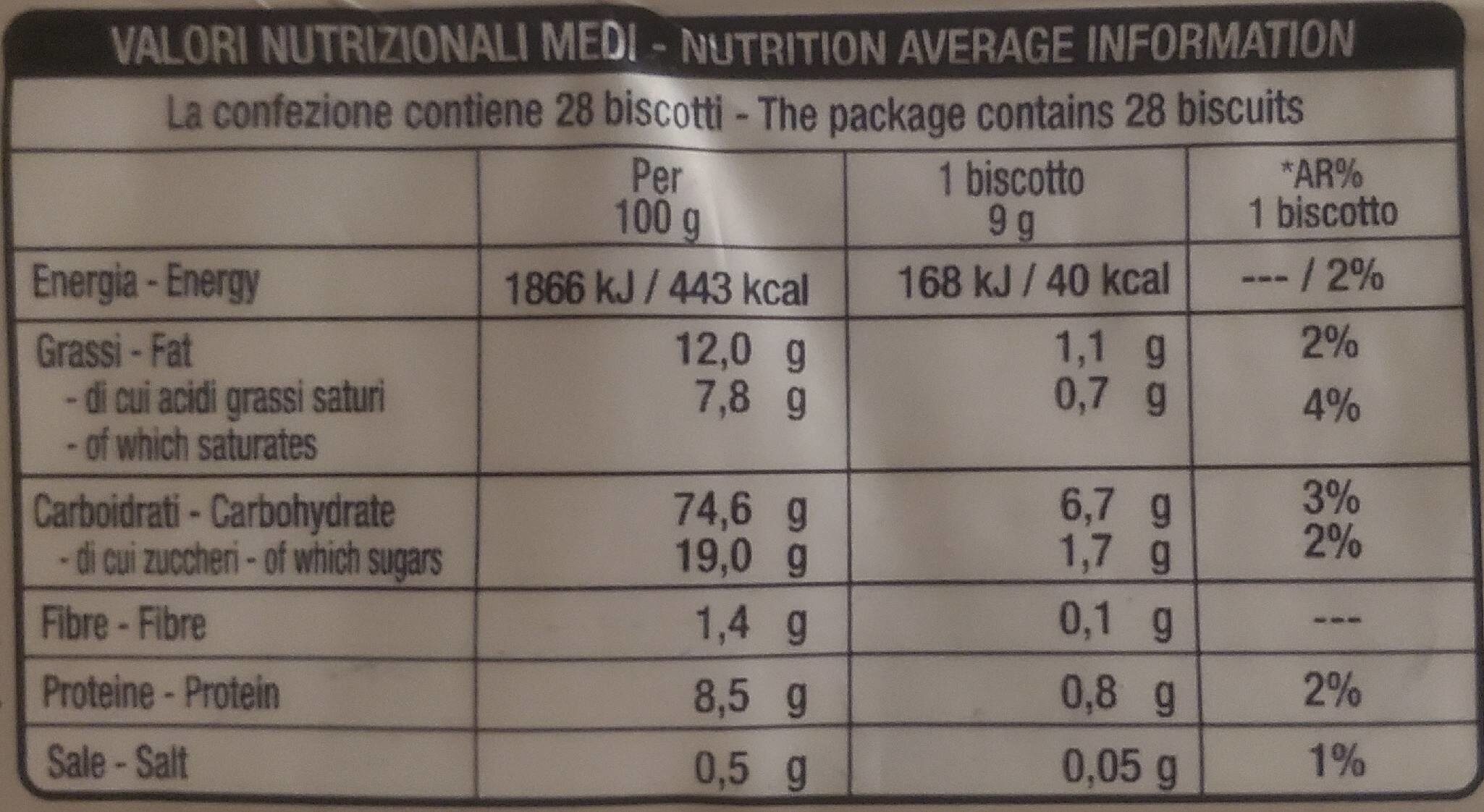Osvego al malto e miele - Biscotti P. Gentilini s.r.l. - 250 g - 9g
Barcode: 8007465004019 (EAN / EAN-13)
Common name: Biscotti al malto e miele
Quantity: 250 g - 9g
Packaging: Plastic
Brands: Biscotti P. Gentilini s.r.l., Gentilini
Categories: Snacks, Sweet snacks, Biscuits and cakes, Biscuits
Labels, certifications, awards: No GMOs, No preservatives, ISO 9001, No colorings, No dyes or preservatives, No hydrogenated fats, No palm oil, it:Senza edulcoranti
Origin of the product and/or its ingredients: Grano italiano
Origin of ingredients: Italy
Stores: Carrefour
Matching with your preferences
Report a problem
Data sources
Product added on by openfoodfacts-contributors
Last edit of product page on by telperion87.
Product page also edited by albee, autorotate-bot, cal, davidepio, ecoscore-impact-estimator, il-mandarino, kiliweb, roboto-app, scarpapazza, tequiladog, yuka.WC9rT05iVVlqYWdidWZjajJ3MzVxL1p1d1lLTGNrcXpLY2tySVE9PQ, yuka.XexBGMasHdMvAfruzawsxB20HeDlPNx3MlUHog, yuka.sY2b0xO6T85zoF3NwEKvlm5bUdjVkwDdMx3ksmOs3PXSMpn1Yowr7Y__aqo, yuka.sY2b0xO6T85zoF3NwEKvlnJpfdHZnx7gLQ3nmWfVnfOFB4TNZ90s-dT9GKs.












